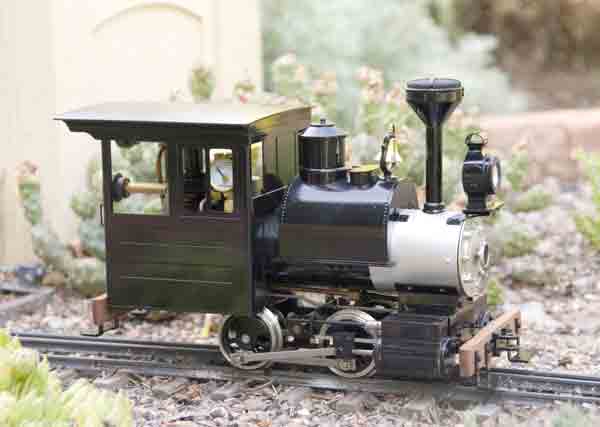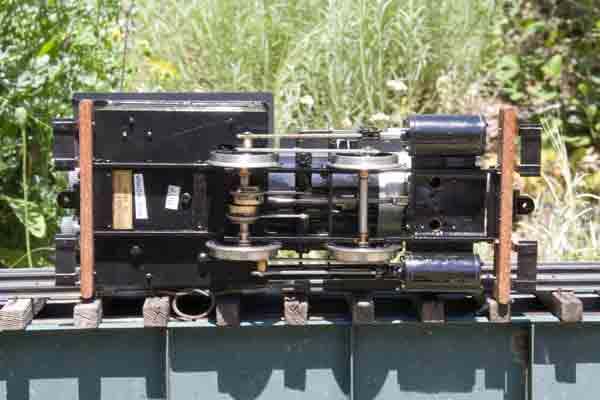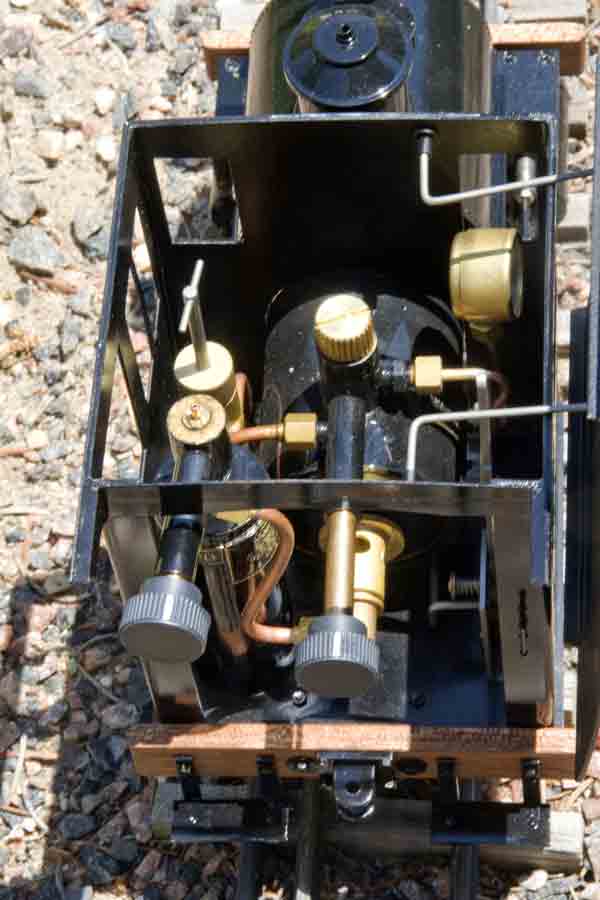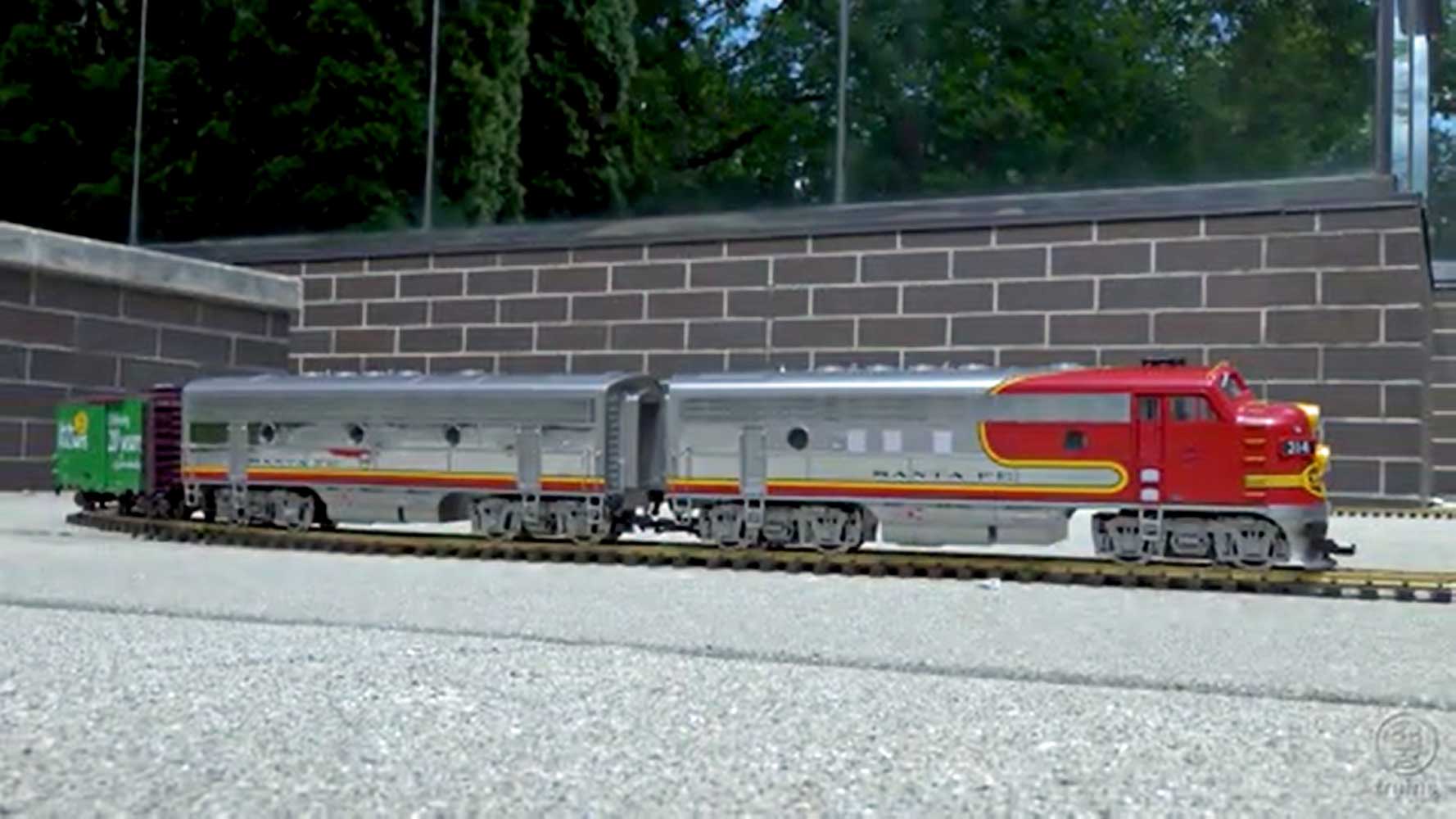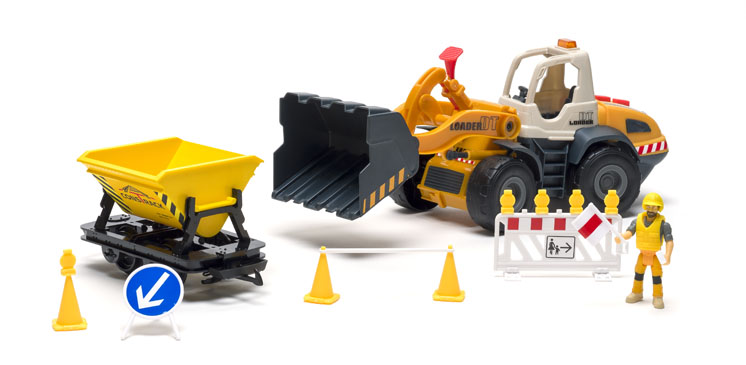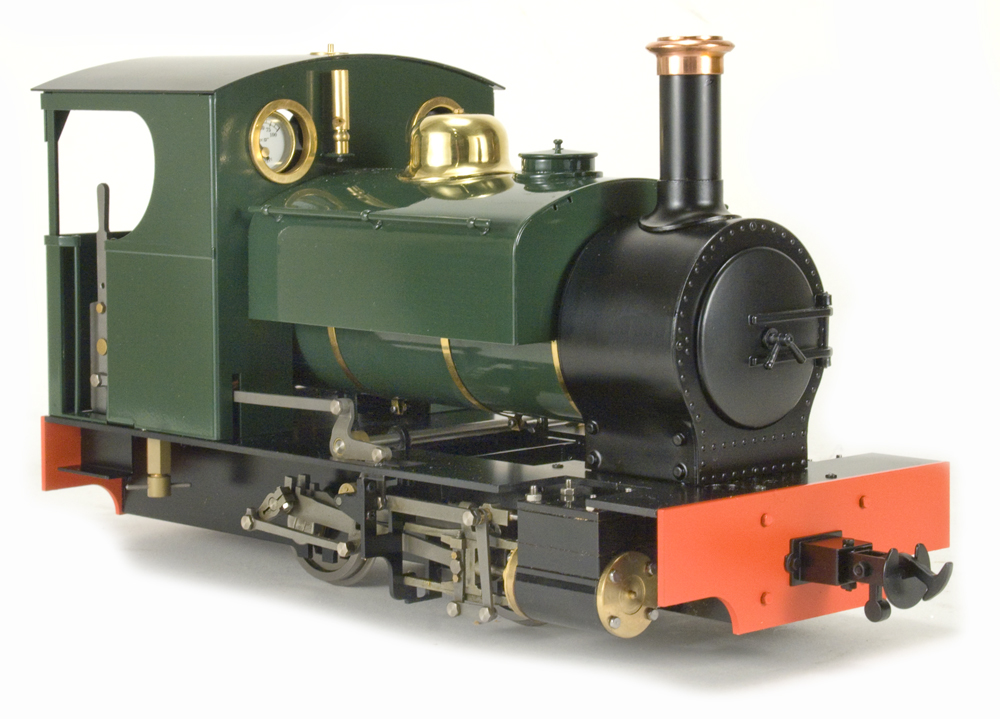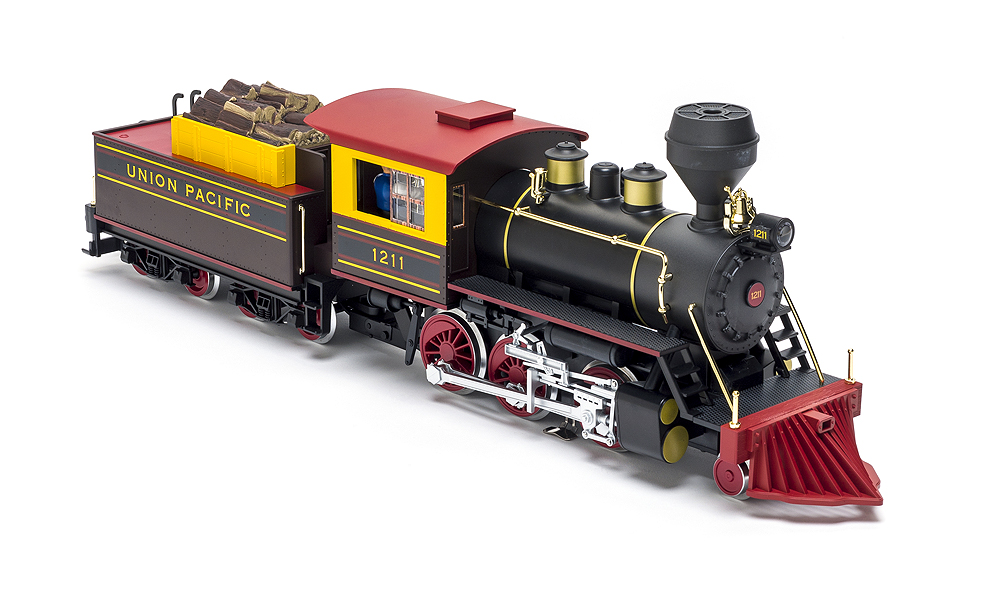Gauge 1, 1:20.3 scale, 0-4-0ST live-steam locomotive
Accucraft
33268 Central Avenue
Union City CA 94587
Price: $549
Website: www.accucraft.com
Gauge-1 model of an 0-4-0 saddle-tank locomotive; single flue, gas-fired boiler; pressure gauge; safety valve; filler plug in cab; reversing lever; displacement lubricator; two, piston-valve cylinders; simple-eccentric valve gear; piston-valve reversing; flip-over cab roof; instruction booklet and accessories included. Dimensions: length over end beams, 81/2″; width, 4″; height, 61/4″. In 1:20.3 scale, this works out to 14’41/2 ” x 6’9″ x 10’7″, respectively
Pros: Well made, attractive locomotive; excellent level of finish; easy to operate; controls readily at hand; good, reliable runner; would lend itself readily to cosmetic modification
Cons: Sloppy cab-roof hinge; toy-type safety valve; knobs on controls instead of levers make both gas and throttle very touchy; water runs out before fuel
Accucraft’s latest incarnation of its ubiquitous Ruby is something a little different, at least in appearance. It seems to have been based on the small Porter industrial locomotives. The cab, small saddle tank, and stovepipe stack with a small spark arrestor certainly give it the flavor of a Porter. It’s cute, if you’ll pardon the adjective.
With former Rubys, the entire cab lifted off, in this version the roof flips over to the side on a hinge, which is an improvement. However, the hinge is pretty sloppy and does not automatically register the roof in its proper position when returning it to normal, a small complaint.
Mechanically, the engine is a Ruby through and through. Inside the cab you’ll find a pressure gauge shining out the right-hand window. If you’d rather it point back toward the engineer, that would be a simple fix. Next to it is the reversing lever, which controls the piston-valve reverser between the cylinders. There’s a turret atop the boiler with a filler plug on top. Protruding from the turret is the throttle valve. This has a control knob on it, which most people find less useful than a lever. The gas tank, to the left of the boiler, has a similar knob. In front of the gas tank is the displacement lubricator. The only other boiler fitting is the safety valve, which is of the toy variety. While it is perfectly safe, I’d still like to see a proper pop-type safety valve on this quality of model.
The engine is fitted with a pair of piston-valve cylinders, painted black. Valves are controlled by brass eccentrics on the rear axle. Reversing is managed by a third piston valve between the cylinders which, when actuated, reverses the admission and exhaust steam, thus changing the direction of the engine.
The boiler is the usual single flue, butane-fired job. I noticed that Accucraft has now added a heat shield and insulation to the smokebox interior, a nice feature. This should prevent the smokebox from becoming as hot as it used to while, at the same time, preserving the paint.
Cosmetics include a dummy headlight, the aforementioned stovepipe stack, a pretty brass bell atop the dummy saddle tank, a nicely turned steam dome concealing the safety (the dome unscrews for access), and a wood-style cab rendered in metal. The engine is fitted with actual wood end beams, steps on either end, and rudimentary link-and-pin couplers.
I prepared the engine in the usual way, first oiling all around, then filling the boiler, gas tank, and lubricator. I opened the smokebox door and struck a light. The fire caught instantly and popped back into the back of the flue, as expected. I had some difficulty, though, in keeping the engine lit until it had warmed up some.
Steam came up briskly and I opened the throttle. The engine immediately lurched forward and sputtered a few times while the cylinders warmed up. Once warm, it was away, running smoothly and strongly. This engine runs fast and the throttle is touchy. Likewise, the gas valve is difficult to control. I’d recommend that purchasers replace the knobs with levers immediately, which should go a long way toward smoothing out performance.
I could not run the engine very slowly when running light. However, with a train of 22 axles, it tamed right down and was a delight to run. The little spark arrestor actually served to keep the engine cleaner, as it trapped a lot of the oil that comes out with the exhaust.
The run went on for lap after lap, ending finally when the engine ran out of water. This is something you must watch. On all of the test runs, water ran out before fuel. When this happens, shut the fire down immediately or risk damage.
This is an excellent little engine, both for the beginner and the more experienced operator who just wants a simple, casual runner that looks good.





